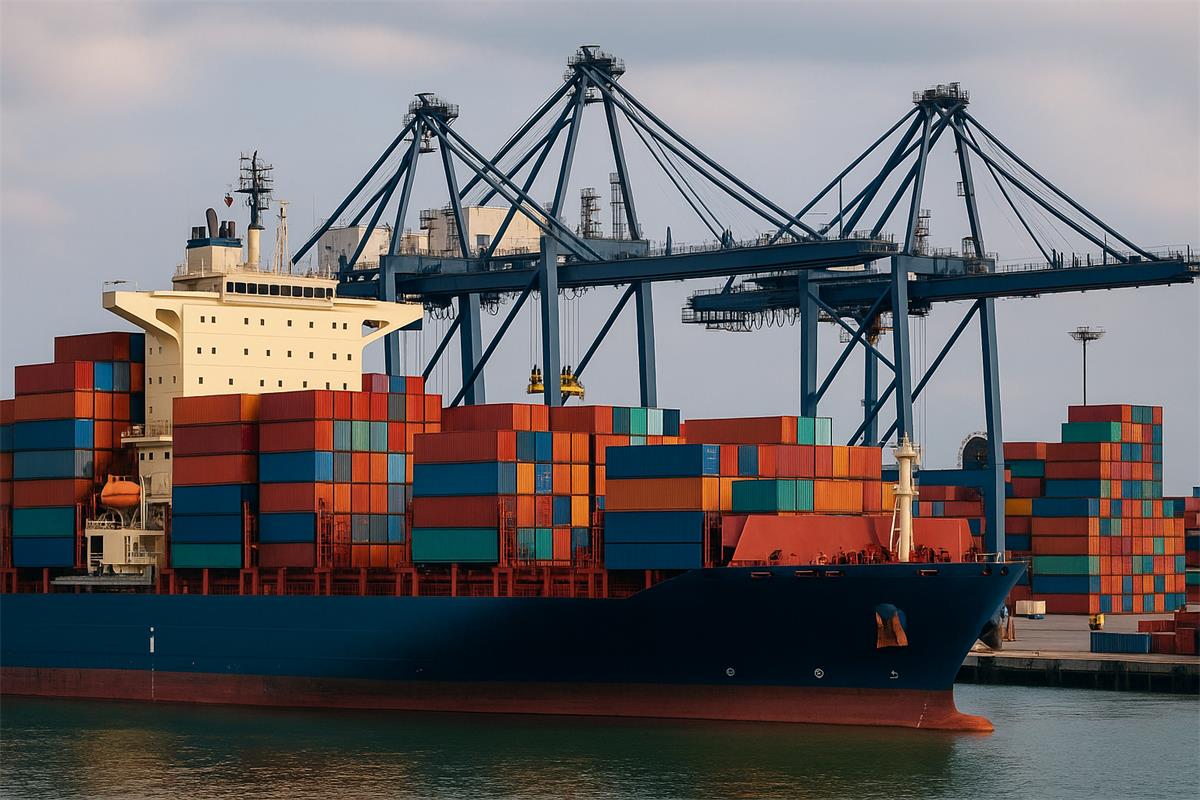Q3: Peak Season Execution
Q3 marks the steady escalation into peak shipping season. As retailers begin building inventory for back to school campaigns and year end holiday demand, global shipping volumes climb consistently. This period also brings operational challenges: labor strikes, typhoon disruptions in Asia, and growing port congestion. Summer holidays in Europe, particularly in August, lead to factory slowdowns and reduced staffing at ports, while in the U.S., widespread vacations may slow decision-making across the supply chain. These overlapping dynamics demand early space bookings, heightened communication with partners, and a flexible logistics strategy.
How businesses handle Q3 often determines their success during the more volatile Q4. It is a time to execute with focus, plan with agility, and prepare for the year's busiest shipping window.
July: Start of the Peak Season
Strategic Focus:
July marks the true onset of peak season and demands a proactive, layered strategy. Shippers must focus on locking in vessel space early, ideally through premium or guaranteed services, as capacity becomes increasingly limited. Beyond space management, it’s also crucial to implement congestion mitigation tactics and route flexibility to navigate port slowdowns and labor-related disruptions. Strengthening communication with carriers and ensuring internal readiness for increased volumes are equally vital.
Key Considerations:
-
Securing premium or guaranteed services.
-
Monitoring labor and strike risks.
Key Trade Trends:
-
Back to school & fall inventory shipping begins: A huge volume of school supplies, electronics, apparel, and consumer tech starts moving, especially from Asia to North America and Europe.
-
Pre-holiday season stocking: Large retailers begin early-stage shipping for Q4 holiday sales.
-
Congestion risks grow: Port congestion, especially in high-traffic terminals like Los Angeles/Long Beach, Hamburg, and Singapore, can delay containers.
-
Labor shortages & strikes risk: July has historically seen labor negotiations and strikes at ports (especially in Europe and the U.S.), adding to disruption risks.
Rate Trends:
>> Noticeable spike in rates: Carriers introduce Peak Season Surcharges (PSS) and Emergency Bunker Surcharges (EBS) to capitalize on tight capacity.
>> Reduced flexibility: Fewer available sailings and limited space.
>> Premium services surge: Shippers increasingly opt for premium or expedited services to ensure delivery, especially for time sensitive goods.
>> Limited sailing availability: carriers often limit available sailings by consolidating services or skipping ports to maximize efficiency. This leads to fewer departure options and increased pressure on already tight capacity, especially on high volume trade lanes. These adjustments are also used strategically to sustain rate levels and optimize vessel utilization at the onset of peak season.
August: Peak Season Pressure Intensifies
Strategic Focus:
Maximize peak season readiness while navigating summer holiday impacts. Prioritize operational efficiency, solidify carrier relationships, and implement robust communication, accounting for potential workforce reductions and adjusted schedules.
Key Considerations:
-
Congestion management at key ports.
-
Operational readiness for Q4.
-
Possible Weather and typhoon impact planning.
-
Staff preparedness for Q4
Key Trade Trends:
-
Holiday inventory ramps up: Large volume shipments of electronics, toys, and seasonal products (Halloween, early Christmas) continue at full steam.
-
European slowdowns: Many factories and logistics hubs in Europe reduce operations for summer holidays, affecting both imports and exports.
-
Typhoon season impact in Asia: Weather-related disruptions in East Asia (especially China, Japan, Taiwan) cause delays and port closures.
-
Reefer shift winds down: Perishable exports start slowing, freeing up some reefer capacity.
Rate Trends:
>> Rates stay elevated: Peak Season Surcharges remain in effect and may rise further depending on demand and disruptions.
>> Space constraints continue: Booking space remains challenging on high traffic lanes (Asia–US, Asia–Europe).
>> Airfreight backup begins: As ocean delays grow, urgent shipments start shifting to airfreight, especially for high value goods.
September: The Pre Holiday Shipping Surge
Strategic Focus:
September is the last full month before the holiday shipping window closes, making it a critical time for execution and risk mitigation. Shippers must finalize holiday season logistics, prioritize time sensitive shipments, and secure any remaining capacity. Strategic focus also includes proactive communication with stakeholders to manage delivery expectations and avoid last minute surprises.
Key Considerations:
-
Prioritization of time sensitive shipments.
-
Final carrier agreement confirmations.
-
Post summer holiday inventory management, to avoid any bottlenecks.
Key Trade Trends:
-
Massive holiday stock movements: Toys, home goods, decorations, and winter apparel move heavily from Asia to Western markets.
-
E-commerce fulfillment intensifies: Amazon, Walmart, and other retailers fill warehouses in preparation for Q4 events like Black Friday.
-
Increased inland congestion: Port congestion spills into truck and rail transport in major import hubs.
Rate Trends:
>> Rate peaks on most trade lanes: Carriers operate near full capacity. Spot rates can spike dramatically, especially for short notice bookings.
>> Premium and guaranteed space fees rise: Many shippers pay extra for priority loading, guaranteed space, or faster transits.
>> Delays more common: Dwell times at ports increase, sometimes adding 3- 7 days to total transit time
As September draws to a close, the final preparations for Q4 must be in place. Execution in Q3 is a critical test of flexibility and coordination, any missteps now can compound under the intense pressure of holiday shipping.


